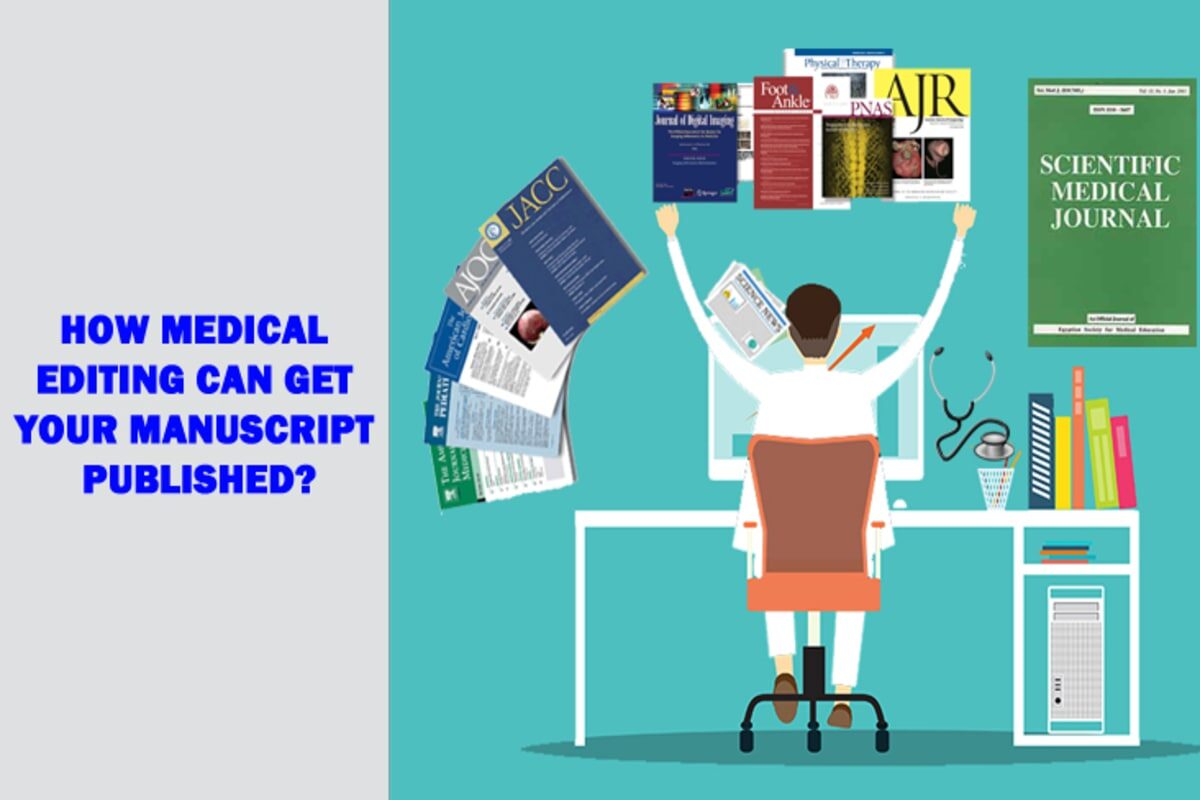Whether you have written a manuscript, thesis, or a dissertation, it needs to be edited and proofread. You can’t publish your research without this revision process.
In fact, good papers always stem from good editing.
You have to edit and proofread your own writing and make sure it is clear, correct, and consistent throughout. This is crucial to establish an authority with your audience and communicate your message clearly.
But, the biggest dilemma! How easy it is to pick up your own mistakes?
Not really! Isn’t it?
Thus, medical editing should always comprise of three passes of your document.
- First pass to catch major errors
- Second pass to catch minor errors and
- A final proofread
Let’s see each step of medical editing in detail!
1) Conduct a First Pass
a) Ensure effective organization
An organized document ensures that the message is presented in the most logical and clear way. Depending upon the type of document you are writing, check whether it’s properly structured.
Check each paragraph, headings, and lists. Make sure their format follows your required style guide. The line spacing, page margins, capitalization, font size, color, and spacing between sections should be consistent.
b) Check the flow and tone
Flow and tone are the hardest elements of the English language. Read out your sentences aloud and you will be able to pick up any awkward sentence constructions.
Avoid writing long sentences. Check the transitions between paragraphs and sentences whether they flow into the next and make sense in succession.
c) Check for grammar and spellings
You can use an automatic spell-checker to catch these types of problems, but they are not perfect. You must review your writing word by word to ensure that the spellings and grammar are perfect. Plus, make sure you are consistent in the spellings according to the type of English you have chosen. For example, organization (US English) or organisation (UK English).
Also, make sure that the tense and voices are consistent throughout.
d) Ensure concision
Avoid any redundancy in the content. If you’ve already covered a topic, do not write about it again. Also, make sure that no word is overused or too repetitive in your document.
e) Check your punctuation’s
The specific punctuation issues to check are the exclamation marks, comma, semicolon, and a full stop. Consider the conventions of the English language to check these.
f) Review your citations and references
Make sure the formatting of your citations and references complies with the required style guide.
In addition, cross-check the in-text citations against the reference list. If you miss out a reference in the list, but have cited in the text, add it to the list. Check all the author names, years, and add the necessary reference information to avoid accidental plagiarism.
g) Check the figures and tables
If your document includes figures and tables, review them and their description in the text. Make sure you have mentioned them in the text prior to their placement. Avoid using acronyms in figures and tables or their titles.
h) Check the lists and equations
If your document has any lists/ equations, format and number them consistently through the document.
i) Refer to any specific instructions
Do you have any specific journal guidelines to follow in writing your medical document? If yes, ensure you follow them completely, whether it’s regards to the word count or the document format.
j) Take notes about the document
While you are conducting the first pass of your document, write notes about the areas that need rectification. For example:
- Elaboration of a particular idea
- Clarification of a particular context
- Specifying the subjects in a sentence
- Rearranging/ deleting any sections
These notes will help you turn your first draft into a second draft on which you can conduct a second pass.
2) Conduct a Second Pass
In the second pass, review the entire document once again, paying attention to the details outlined above, especially the clarity and the flow. Correct any errors you might have missed.
3) Conduct a Final Proofread
After the second pass, it’s time to review the whole document for the final time, checking for any missed or introduced errors. And Voila! You have finished your medical editing process and have a document that is ready to submit to the journal.
Conclusion
Medical editing is more of an art and can’t be learnt overnight. It’s easy to make mistakes or skip your own errors in writing, especially if English is not your first language. If medical editing is not your cup of tea or you have deadlines to meet, get it done from a professional medical editing services. But, never take the process of medical editing lightly. The final quality of your document depends upon it.





